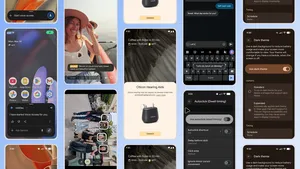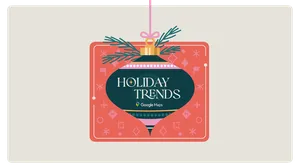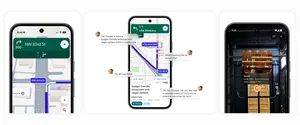How I’m making Maps better for wheelchair users like me
If you visit a city and don’t see anyone using a wheelchair, it doesn’t mean they’re not there. It means the city hasn’t been built in such a way as to let them be part of things. I know this firsthand: I’m one of 65 million people around the world who uses a wheelchair, and I see every day how a city’s infrastructure can prevent people like me from being active, visible members of society.
On July 29, 2009, I was taking my usual morning walk through New York’s Central Park when a dead tree branch snapped and fell on my head. The spinal damage partly paralyzed my lower body. I spent the next seven months in the hospital, where I got the first glimpse of what my life would be like from then on. I was going to use a wheelchair for the rest of my life—and my experience as a born and bred New Yorker was about to change forever.
That’s because much of the city isn’t accessible for people like me. Fewer than one in four subway stations in New York City have wheelchair access. And plenty of places, from restaurants to schools, lack a way for me to even get inside. It was humbling to realize these barriers had been there throughout my growing up in New York; I simply hadn’t noticed.
Those realizations were in my mind when I returned to work in 2011 as an engineer on the Search team, especially because I could no longer take my usual subway route to work. However, the more I shared with colleagues, the more I found people who wanted to help solve real-world access needs. Using “20 percent time”—time spent outside day-to-day job descriptions—my colleagues like Rio Akasaka and Dianna Hu pitched in and we launched wheelchair-friendly transit directions. That initial work has now led to a full-time team dedicated to accessibility on Maps.
I’ve also collaborated with another group of great allies, stretching far beyond Google. For the past several years, I’ve worked with our Local Guides, a community of 120 million people worldwide who contribute information to Google Maps. By answering questions like “Does this place have a wheelchair accessible entrance,” Local Guides help people with mobility impairments decide where to go. Thanks to them, we can now provide crowdsourced accessibility information for more than 50 million places on Google Maps. At our annual event last year and again several weeks ago, I met some amazing Guides--like Emeka from Nigeriaand Ilankovan from Sri Lanka--who have become informal accessibility ambassadors themselves, promoting the inclusion of people with disabilities in their communities around the world.
Today, on International Day of Persons With Disabilities, I hope our work to make Google Maps more inclusive underscores what Angela Glover Blackwell wrote so powerfully about in “The Curb-Cut Effect.” When we build with accessibility in mind, it doesn’t just help people with disabilities. It helps everyone. Curb cuts in sidewalks don’t just help me cross the street—they also help parents pushing strollers, workers with deliveries and tourists with suitcases. As Blackwell puts it, building equity is not a zero-sum game—everyone benefits.
The people in wheelchairs you don’t see in your city? They've been shut out, and may not be able to be a part of society because their environment isn't accessible. And that’s not merely a loss for them. It’s a loss for everyone, including friends, colleagues and loved ones of people with disabilities. I’m grateful to those who stay mindful of the issues faced by people like me to ensure that our solutions truly help the greater community.






